Venosa, the city of Horace. Venosa, crossroads of people and goods. Venosa, cradle of a millenary culture and treasure chest of precious artistic and architectural treasures. In the province of Potenza, on the border between Basilicata and Puglia, on a plateau sandwiched between two valleys and surrounded by lush vegetation lies an authentic gem little known to mass tourism. Traces of the first settlements in Venosa date as far back as the Neolithic period, as evidenced by the discovery of a very ancient necropolis at Notarchirico. Venosa’s fortunes began, however, in Roman times, when the armies of Urbe wrested it from the Samnites. Since then this small town grew in size and importance, becoming one of the most important junctions for the entire southern part of the boot thanks to the fact that it was located right on the Appian Way. In 65 B.C., among other things, one of the most important poets of antiquity, Quintus Horatius Flaccus, was born in Venosa. With the passing of the centuries, Venosa has never lost importance thanks to its barycentric position for all the traffic in this corner of Italy, and because of this it has known different dominations that have each left behind important traces of their passage in a succession of styles that today make a visit to Venosa a journey through the folds of time and its wonders. Here are 10 things not to be missed on your trip to Venosa.
A visit to discover Venosa and its territory can only begin by walking through the streets of the large Archaeological Park. Here you will still find perfectly preserved monumental remains of the Latin colony of Venusia, whose founding dates back as far as 291 B.C., and which was at the center of trade in these areas until medieval times. Today inside the archaeological park one can still admire great works made by the Romans, starting with the bathhouse built in the 1st century AD and renovated until the 3rd, but also the houses among which stands out a splendid domus embellished with wonderful mosaics and a block bordered by two paved road axes. Against the backdrop of the entire archaeological tour then stands majestically the great abbey of the Holy Trinity, in which the different phases of construction emerge clearly, from its Roman origins, when it was a domus, passing from renovation to renovation until the Norman era. Just a few steps away is then the large amphitheater, elliptical in shape and on three different levels.

The symbol of Venosa is definitely the great ducal castle of the Balzo, built during the period of the Aragonese dynasty. It is a manor built in the 15th century at the behest of Duke Pirro del Balzo and then modified several times over the centuries as its functions changed. Originally conceived as a defensive fortress, it had a square plan with a three-meter-thick city wall and cylindrical corner towers, but it was from the beginning of the 17th century that its profile began to soften, when it became a stately home. Passed to the Ludovisi family as an asset of the feud, it was completely abandoned, and the violence of the seismic tremors that repeatedly struck throughout the seventeenth century undermined its structure and functionality. It was only at a later stage that the castle was rebuilt with the addition of parts more suited to the times, such as the elegant loggia on the main floor erected at the behest of the Caracciolo family in an effort to reassert seigniorial power over the city that was increasingly far removed from the splendor of its glorious past. Currently, at the beginning of the access bridge, there are two lion heads from the Roman ruins.
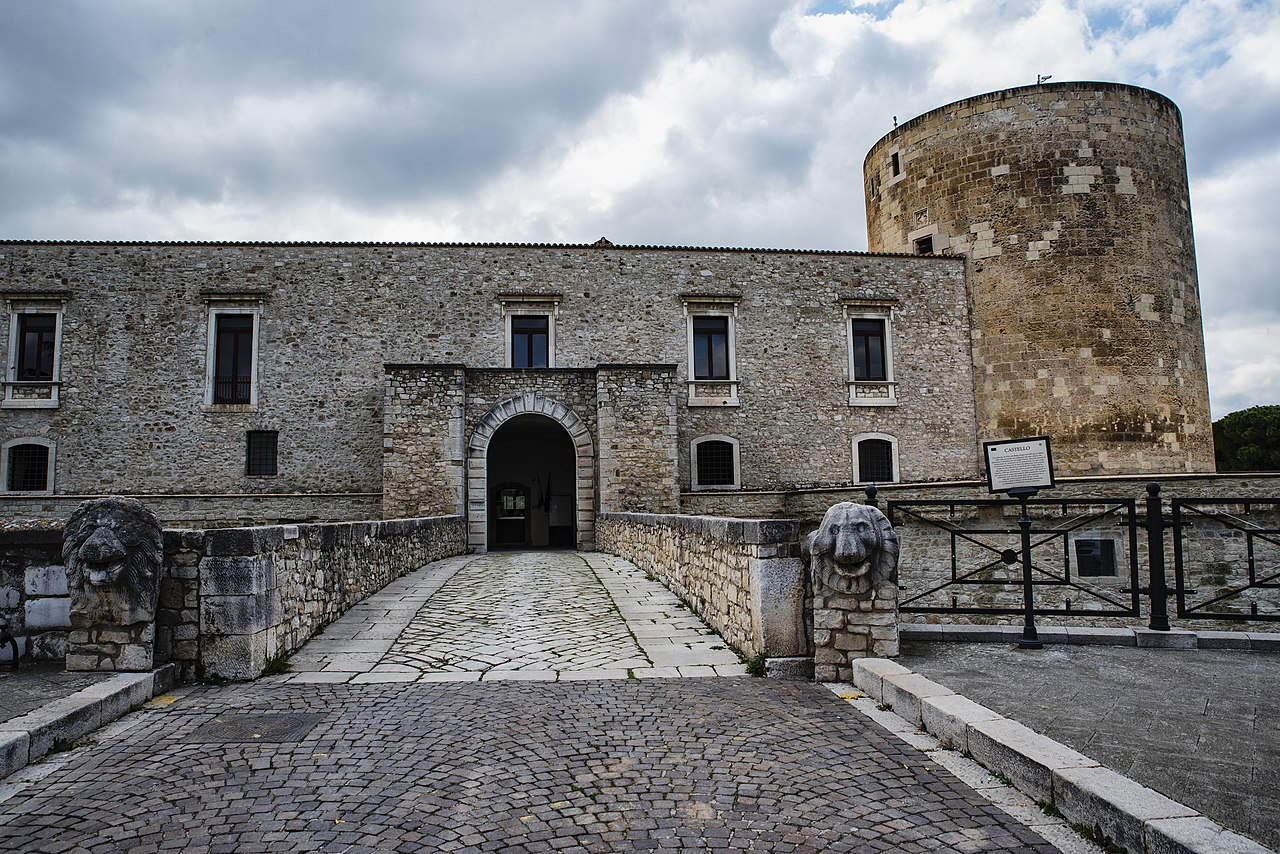
A grand project, never fully realized: the Holy Trinity complex in Venosa has a very special charm. The grandeur of its architecture recounts the importance of this city over the centuries, while the never-finished walls are a tangible sign of its alternating fortunes throughout history. This large monumental complex is located at the far edge of the modern city and consists of three parts: the ancient church, flanked on the right by an advanced building that was once the place reserved to receive pilgrims; the unfinished church, whose perimeter walls run behind the ancient church and in continuation on the same axis; and the Baptistery, probably an early Christian church with two baptismal fonts, separated from it by a short space. The ancient church is thought to rise where an early Christian building in turn stood on the ruins of a pagan temple dedicated to the god Hymen, and its construction began around 900. The unfinished l temple, on the other hand, would have been grand in size, more than 2,000 meters, but was never completed because of the crisis into which the Benedictine monastery plunged soon after the expansion work began. In front of the entrance, the remains of a wide curvilinear wall can be seen: this is what remains of the Baptistery today.
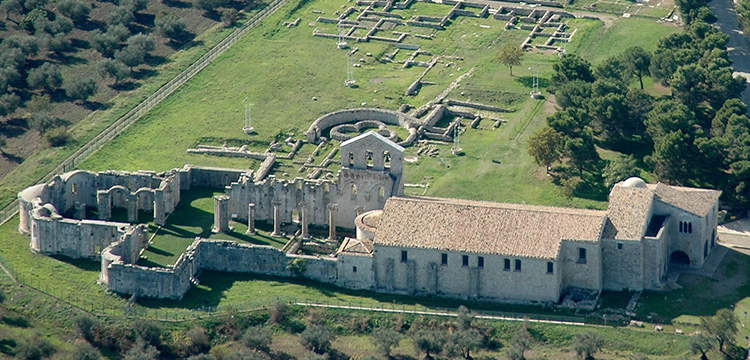
As with many other buildings in Venosa, the Co-Cathedral of St. Andrew the Apostle not only makes its own the style and taste that are children of the very long history of this land, but it also merges materially with this rich past. In fact, the Co-Cathedral of St. Andrew stands where the ancient parish church of St. Basil stood, and what’s more, the same material used for its construction was taken from the Roman Amphitheater so much so that Latin inscriptions and funerary stones can still be seen embedded in the building. As for the layout of the church, this consists of three modular naves and pointed arches, and on the outside it is especially notable for its austere grandeur. On the other hand, simple but at the same time also very refined is the interior of the co-cathedral where some noteworthy monuments stand out, such as the one dedicated to Maria Donata Orsini, wife of Pirro del Balzo, which is located in the crypt. Among the chapels, however, the most beautiful is probably that of the Blessed Sacrament with its two large frescoes on biblical themes.
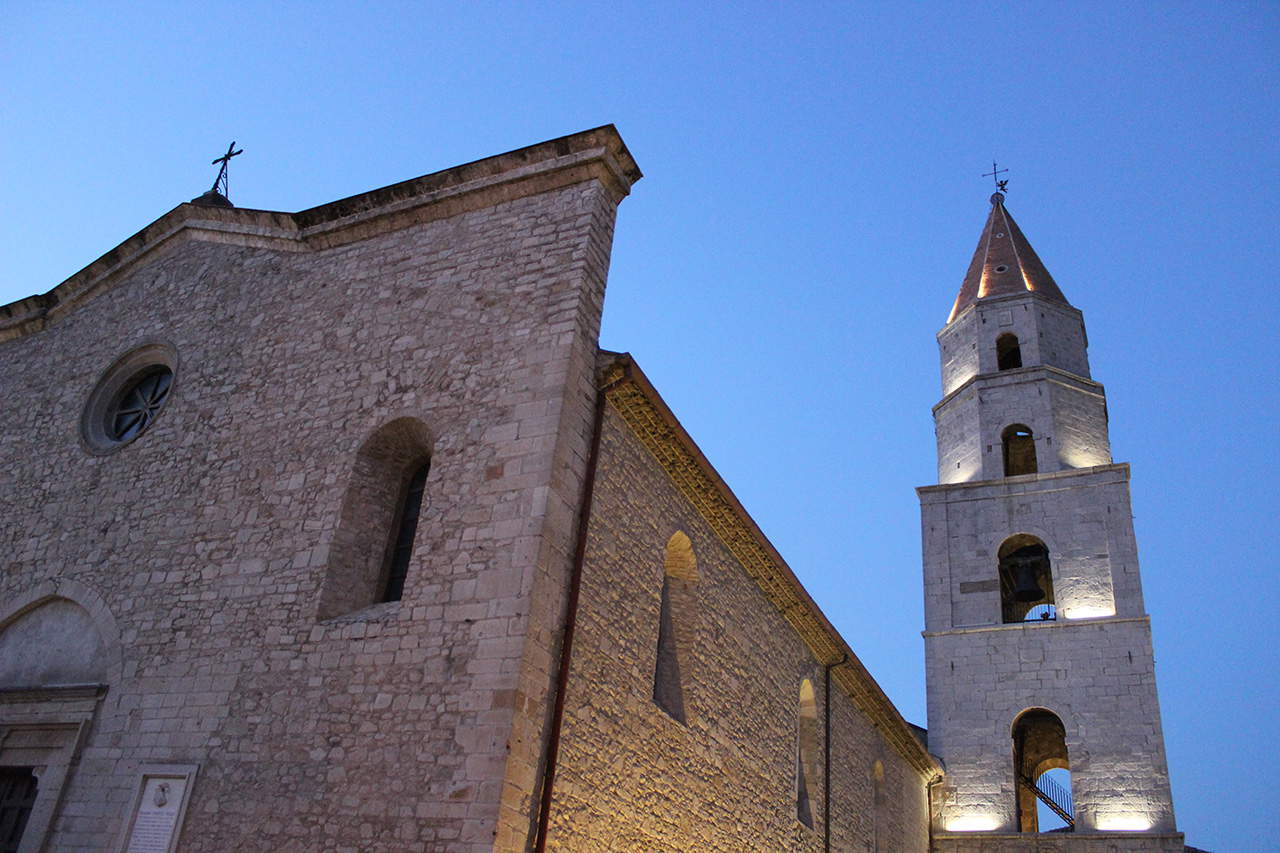
The church of San Filippo Neri, better known as the Church of Purgatory, is certainly one of the most iconic buildings in Venosa. This authentic 17th-century jewel stands out in the historic center of the Lucanian town with its sober profile and Baroque flavor. It was built in 1679 at the behest of the ’Confratelli del Monte dei Morti,’ who also gave financial support for its construction. On the entrance portal is an engraving where a phrase from the poet Horace, ’Pulvis et umbra,’ is written. Unmistakable is the facade, all friezes, volutes, niches and pinnacles, the work, it is supposed, of a Roman architect, brought to Venosa around 1680 by Cardinal Giovanni Battista De Luca. Inside are a 17th-century polyptych by an unknown author depicting the creation of the world and 18th-century canvases by Carlo Maratta. The interior contains beautiful twisted columns and a St. Philip that perfectly echoes the taste of the entire building.
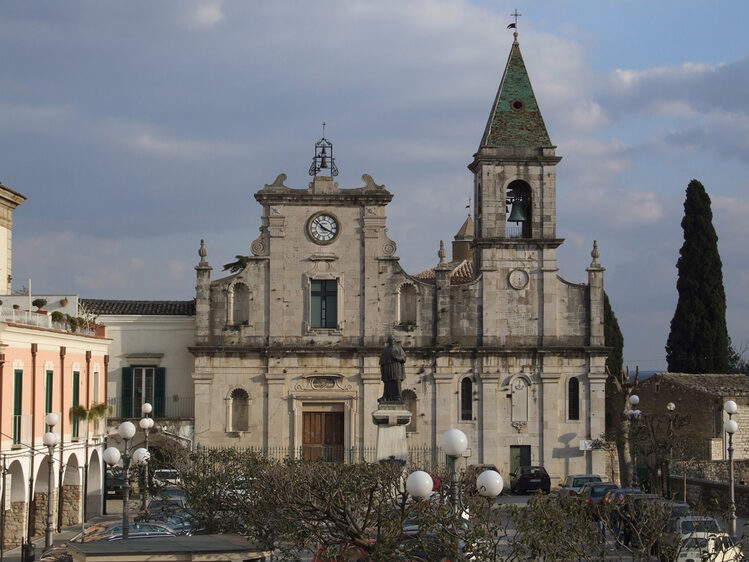
Venosa’s most famous citizen was born here more than two thousand years ago. Quintus Horatius Flaccus, or simply Horace, was one of the most famous poets of antiquity, and in Venosa he was born and grew up from 65 BC. Today in Venosa you can still visit a site dating from that time, known to all as Horace’s house. It is a structure consisting of thermal rooms of a patrician house, composed of a round room that constituted the caldarium and an adjoining rectangular room. The facade shows visible sections of Roman structures clad in brick. Horace’s history in Venosa is linked to the poet’s childhood and adolescent years. The son of a freed slave, Horace grew up alone with his father, who was also his first teacher, before he began to travel throughout the ancient world, settling in Rome, where he attended the best schools of grammar and rhetoric, but also passing through Athens, where he appropriated the finer culture of the time, a pupil of celebrated academics, peripatetics, and Epicureans.

Even in the 13th-century Angevin fountain the traces of Venosa’s past greatness are clearly visible. This important monument, moreover, consists of a long trough leaning against a wall, at the ends of which are placed two stone lions from the Roman ruins: the first, almost intact, holds a ram’s head under its paw. Also of ancient origin is the circular altar set up in the area in front of it. In addition to these references to Roman history, however, the Angevin fountain is also an important testimony to the medieval period. The fountain, not coincidentally, owes its origin to the privilege granted to the city by King Charles II of Anjou in the year 1298, by which, among other things, a body of local inspectors was established, charged not only with the maintenance of the fountain, but also with the control of the aqueducts that fed it. It is located in the place from which, until 1842, the city was accessed through the city gate known as the fountain.
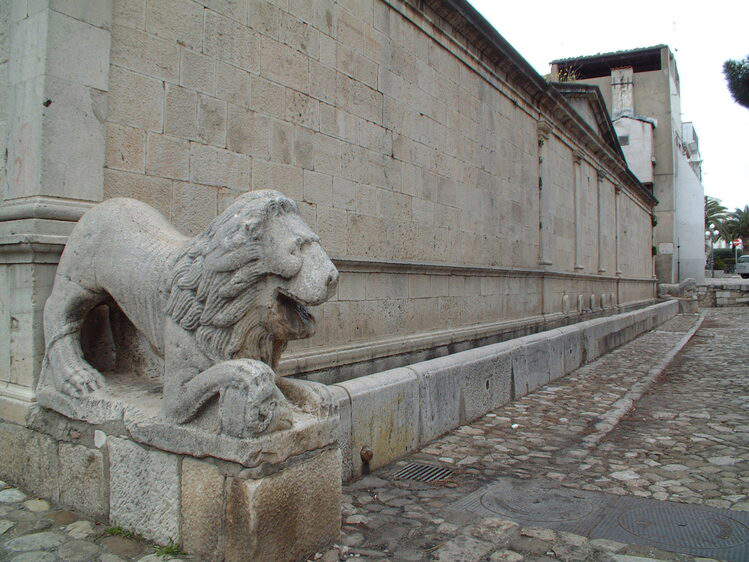
Just over 500 meters from the center of Venosa is an underground citadel of remote origins. Excavated in the Magdalene hill, one can visit the so-called Jewish Catacombs. These are divided into several nuclei within a row of caves dug into the tuff that preserve wall and ground loculi. To the visitor, the catacombs present themselves as a network of underground tunnels organized around three main corridors from which a series of small side compartments branch off. The walls of the side corridors are occupied by small niches and niches or open into larger caves that house multiple burials. The discovery of this authentic archaeological treasure dates back to the mid-19th century, but even then the catacombs showed the clear signs of looting and devastation. At the end of the main gallery, however, numerous inscriptions in red-painted or graffitied letters can still be observed. Of these, 15 are in Greek, 11 in Greek with Hebrew words, 7 in Latin, 6 in Latin with Hebrew words, 4 in Hebrew, and another 4 are in fragments.

The archaeological area of Notarchirico is located about ten kilometers from Venosa and is one of the most important Paleolithic excavation areas in southern Italy. In the part that can currently be visited, nine levels referable to a period between 600 thousand and 200 thousand years ago can be closely observed, although it is mainly the area dating back to the Lower Paleolithic, dated to about 359 thousand years ago, that makes Notarchirico one of the best-preserved and richest European sites on the Middle Pleistocene. From1979 to the present, several extensive habitation layers have been unearthed, with the presence of artifacts associated with the remains of currently extinct animal species. Of particular note is an Elephant skull, but also the remains of Bovidae and Cervidae along with rarer finds of rhinoceros, hare, tortoise and a few birds. Tools on sliver and pebble were also found. The trail today is illustrated by a series of panels that help visitors understand the complex stratigraphic sequence of the excavation.
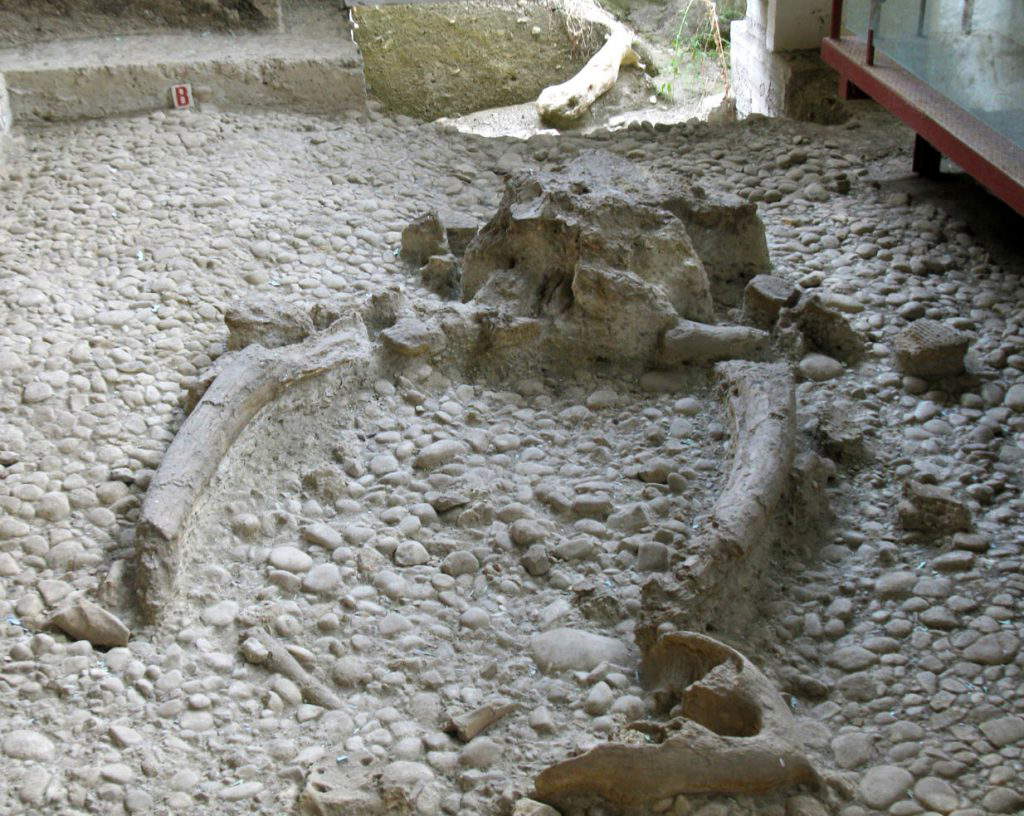
The symbol of Roman Venosa is undoubtedly the large amphitheater whose construction dates back to the Republican era and was also renovated in later centuries. The center of social life in Venosa at the time, the amphitheater had an elliptical shape and is believed to have been able to accommodate up to 10,000 spectators. Its remains can still be visited today within the large archaeological area of Venosa, but in fact pieces of the Roman amphitheater can also be observed simply by walking through the streets of the town. With the decline of Roman Venusia, the amphitheater experienced a fate similar to many imposing buildings of antiquity: it was literally dismantled piece by piece, and the materials taken away were used to qualify the urban environment of the city. In particular, some of the stone lions that we currently find within the built-up area, in fact, come from the ruins of the amphitheater in the same way as many other stones that were used to build the Venosa of later centuries.

 |
| Venosa, what to see: 10 places in the city of Horace |
Warning: the translation into English of the original Italian article was created using automatic tools. We undertake to review all articles, but we do not guarantee the total absence of inaccuracies in the translation due to the program. You can find the original by clicking on the ITA button. If you find any mistake,please contact us.